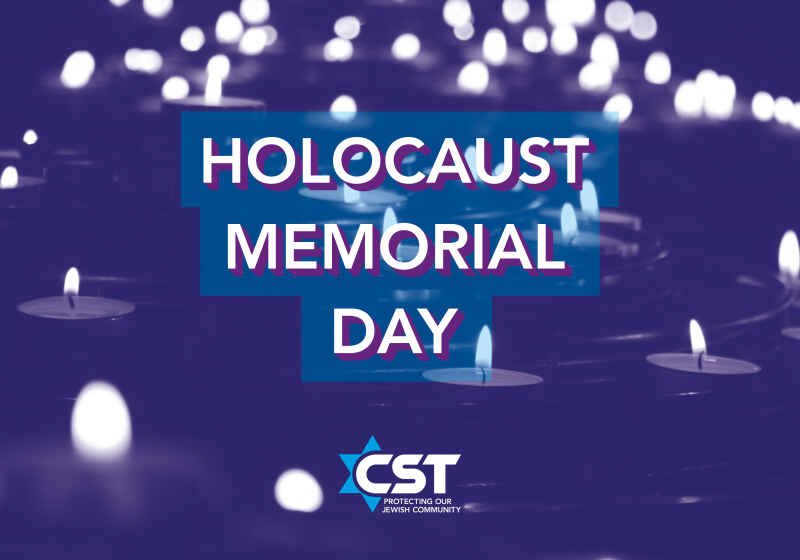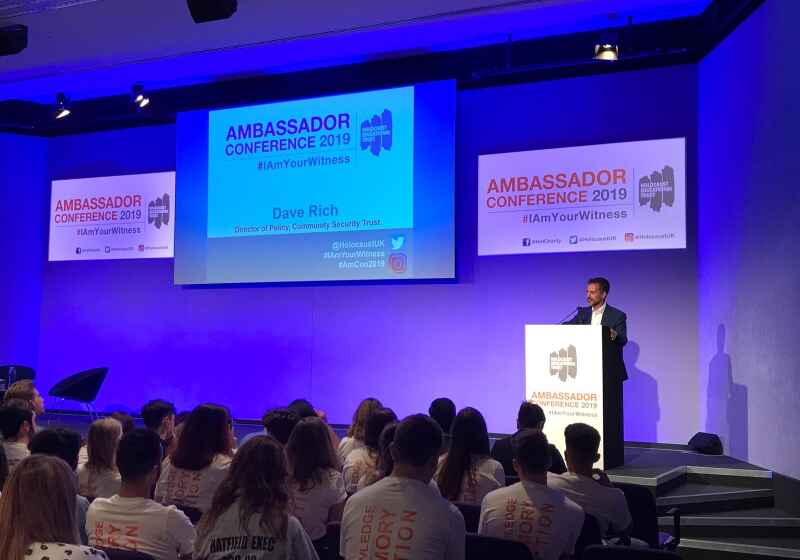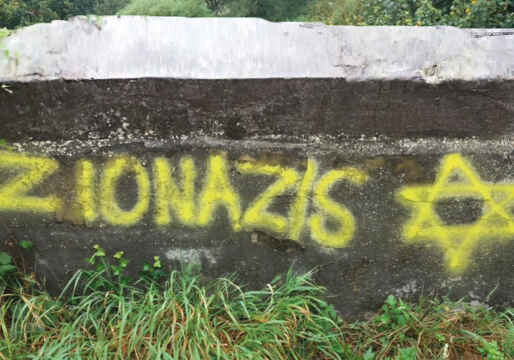CST Blog
Thursday 14th April 2016 – a day I will never forget
15 April 2016
Sam, an experienced and highly valued member of CST staff who leads on our responses to the victims of antisemitic hate crime, took part in the Holocaust Education Trust’s Lessons From Auschwitz project. 180 people participated, including Police officers and students. Below is the account and reflections of the tour by Sam.
Thursday 14th April 2016 was a day I fulfilled a sense of obligation and something that I see as every Jew’s duty, regardless of “how Jewish” you are. Thursday 14th April 2016 I went to Auschwitz.
I didn’t know what to expect. Before taking off someone very close to me said “remember, you get to come home.” And with that in mind I got on that plane to Poland. Would I break down in tears, unable to cope with seeing first-hand what evil had happened to my people, would I freeze on the spot, would I see things I have never seen before?
The first part of the trip was spent in Oswiecim, a small town 15 minutes away from Auschwitz. We visited the site of the former Great Synagogue the Nazi’s burned to the ground and we visited the museum where the Synagogue has been rebuilt to show what it was like pre-war.
There are no words that can describe the enormity of it all when entering Auschwitz I. It is green, there is life - trees grow, there is bright pure grass growing, birds chirp, cars drive past, people live with their houses backing on to the grounds of the former Nazi camp. It’s a bustling place, there are people everywhere, tours from all over the world, people walking in and out of the blocks, listening to the stories, stopping to see the gallows where public hangings took place, stopping at the “death wall” where political prisoners were shot, stopping at the hut where cruel experiments were carried out. Auschwitz l is a museum – a dark harrowing museum.
Elements of the camp were distressing. I stood in the one remaining gas chamber, seeing where the Nazis dropped the gas canisters through the roof and exterminated the lives of many innocents. Standing in a room, knowing that a mere 70 years ago people were slaughtered by a regime who thought of Jews as subhuman. A single bouquet stood in the corner outside.
I cannot put into words the sheer size of Birkenau (Auschwiz II). It’s enormous. It’s bleak and desperate. There is no grass, there is no life. There are no birds flying overhead.
I stood in barracks where hundreds of prisoners were held. The men’s barracks on one side and the women and children’s on the other. I saw first-hand the latrines they had to use, the undignified way they had to live. I say live – this wasn’t living; this was just existing. I stood on the railway tracks which carried around one million Jews from around the world to their death.
I stood next to a cart that transported Hungarian Jews. A cart with no windows – a box on wheels. A box that had up to 100 Jews crammed in. A box with no toilets. A box with no light. Carts like this would have carried Jews from around Europe – some that were deported from as far away as Corfu. Journeys that would have taken up to ten days in total. Journeys many would not have survived. As these Jews got off the carts they were selected. Some never made it to a bed, some went straight to the registration room, were stripped, shaved and gassed.
The gas chambers no longer stand. They were blown up in a desperate attempt by the Nazis to destroy any evidence of their mass executions. There were three chambers in Birkenau. All that remains are piles of rubble.
We ended our day with a small memorial service inside the registration room. The rooms are empty bar a few exhibitions of personal belongings. House keys that the victims took with them believing that they would return home, but they never did.
In that room are three walls of photos. These aren’t photos we are used to seeing when we learn about the Holocaust. These aren’t photos of corpses or of prisoners in their striped uniforms, or prisoners awaiting their fate. These are happy photos. Photos of families before the war. Before they were deported. Before their humanity was stripped from them. These are photos they took with them believing they were starting a new life. Photos they thought they would display in their new homes. Not homes they wanted to go to, but new homes none the less. These are photos that are identical to the sort of photos I have of my family at home. Photos that we all have of our grandparents and distant family.
We finished with a small memorial service with poems being read that were written by survivors. Our Rabbi who accompanied us told us a story. A story that I still can’t relay without tears stinging my eyes. A story of a man and his wife who were living in Vienna who couldn’t afford to get married, yet at the outbreak of the war managed to find a way. A couple whose love of song bought them together. He dreamt of being a Cantor, yet was deported, and whose wife never saw him again. A neighbour told the woman what was happening in Europe and bought her a ticket to get out of Vienna. She fled to the UK and set up home in Glasgow, still believing one day she would see her husband one day again. She was taken ill with pneumonia on arrival and was found to be 2 months pregnant. Her daughter went on to have children of her own. They never knew their grandfather. Yet the grandson of that man was the Rabbi standing in front of us fulfilling his late grandfather’s dream. And as we lit the memorial candle that we took to the railway tracks, he said to us a candle represents two things. The candle represents life; one flame can light another and can light up the darkest of rooms, but it also represents destruction.
He told the group of students we were with that in 2016, as we face such uncertainty and are facing a new threat from a small group who want the annihilation of Jews and others who don’t believe in their cause, we can chose light or we can choose destruction.
In the darkest of days in that terrible place, Jews had hope. They wrote their stories down, they believed there would be happy times again, they defied the rules and found ways to pray, to observe the Sabbath.
As I sat on that coach making our way to the airport, the enormity of the day hit me. All I wanted to do was get home and tuck my children in and kiss them goodnight.
I don’t think I will ever fully comprehend the sheer scale of what the Nazis actually did. I have so many questions. How did they do it, how did they get the transport built to carry the Jews, how did they facilitate the paperwork necessary to deport the Jews from around Europe, how did they finance it, how did they get the details of all of these Jews to know where they were? But not only how, but why. What did the Jews do to make them believe we are such a threat?
But today is Friday. Today I get to go and buy my food for Shabbat. Tonight I will light my candles and say the blessing with my family around me.
Choose light.


